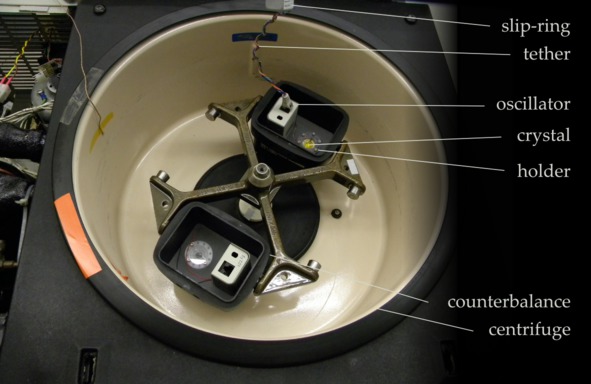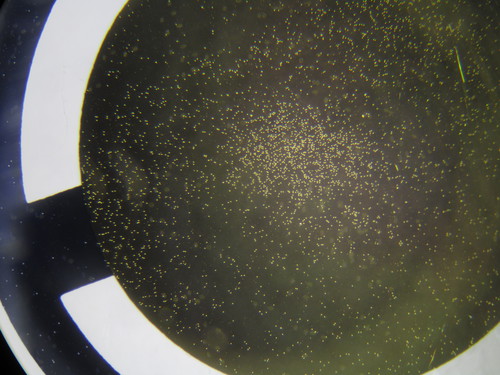
Annotated Image of the CF-QCM

Annotated Image of the CF-QCM
A quartz crystal microbalance is typically used to sense changes in the density-viscosity product of the sample near the sensor surface. If properties of the material are known, this can also be used to monitor mass adsorption. In either case, such properties are reckoned from the negative shift in the system’s resonance frequency. However, for small asperity contacts such as microparticles, a positive shift in frequency and bandwidth occurs. This shift is descriptive of the contact mechanics between the sensor and sample. These two paradigms can be linked in a novel way by putting the QCM in a centrifuge and either “pushing” or “pulling” the sample with respect to the sensor surface.
For details, please see the manuscript (Nature Communications, paywalled). If you do not have access this preprint will give you the main ideas. For any correspondence related to this topic, contact me.
This work was conceived by Yuki Sato of the Applied Matter & Devices Group and carried out at the Rowland Institute at Harvard.
Further theoretical analysis was done by myself and Frank Vollmer at the Max Planck Institute for the Science of Light.

Micron-sized polystyrene beads on the surface of a QCM.
To compliment the and assist others in replicating the work without a large initial investment. We provide additional details here. Due to the way Nature Communications treats supplemental material, it was not possible to include all these details in the original submission.
First, we provide for the reader an extended supplement this supplement contains additional references regarding how the simulation was set up along with some verification examples.
Second, below you will find links to several COMSOL 4.3 models which were used in the simulation described in the manuscript.